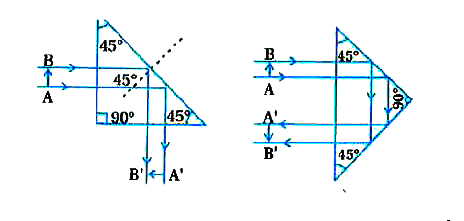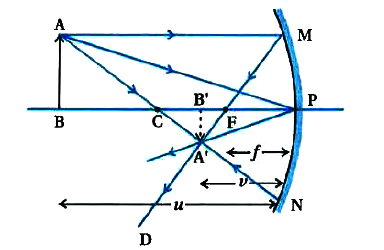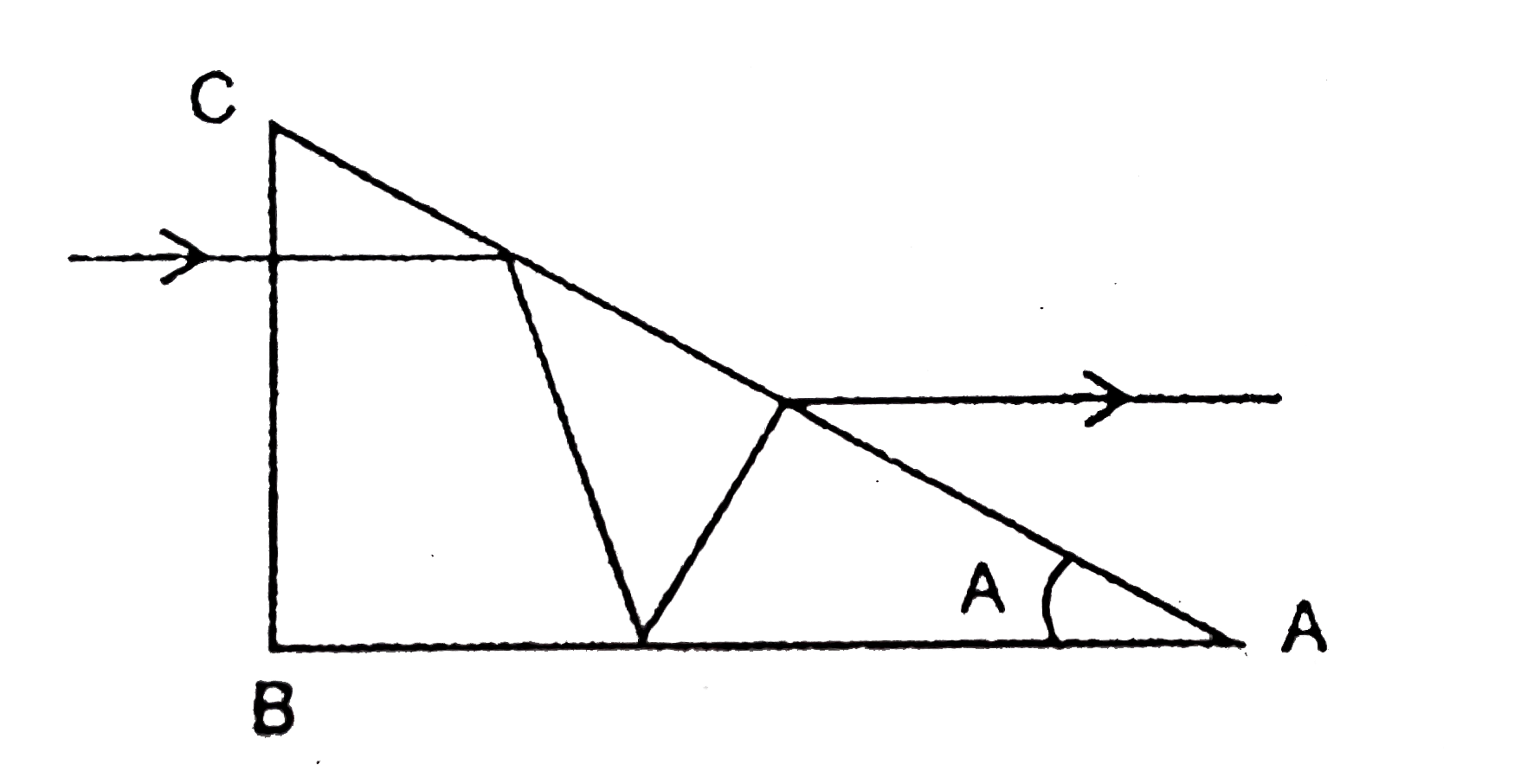Explain the phenomena of total internal reflection in right angle prism. Solution in Gujrati
Prisms designed to bend light by 90∘ or by 180∘ make use of total internal reflection figure (a) and (b).

In the first two cases, the critical angle ic for the material of the prism must be less than 45∘.
Such a prism is also used to invert images without changing their size figure (c).

Topper's Solved these Questions
- BOOK - KUMAR PRAKASHANCHAPTER - RAY OPTICS AND OPTICAL INSTRUMENTSEXERCISE - SECTION - A (TRY YOURSELF)74videos
RAY OPTICS AND OPTICAL INSTRUMENTS
- BOOK - KUMAR PRAKASHANCHAPTER - RAY OPTICS AND OPTICAL INSTRUMENTSEXERCISE - SECTION-B (NUMERICALS)(NUMERICAL FROM TEXTUAL ILLUSTRATIONS)17videos
RAY OPTICS AND OPTICAL INSTRUMENTS
- BOOK - KUMAR PRAKASHANCHAPTER - MOVING CHARGES AND MAGNETISMEXERCISE - SECTION D (MCQs ASKED IN COMPETITIVE EXAMS)34videos
MOVING CHARGES AND MAGNETISM
- BOOK - KUMAR PRAKASHANCHAPTER - SAMPLE QUESTION PAPER EXERCISE - PART-B SECTION-C5videos
SAMPLE QUESTION PAPER
Similar Questions
Give range of wavelength of visible light.
02:32View SolutionSuppose that the lower half of the concave mirror.s reflecting surface as shown in figure is covered with an opaque (non-reflective) material. What effect will this have on the image of an object placed in front of the mirror ?
 01:59View Solution
01:59View SolutionElectric charge Q having mass M moves on a circular path of radius R with velocity →v, perpendicular to uniform magnetic field B. When a particle completes one revolution, work done by the field is _______
03:54View SolutionTwo charges –q and +q are located at points (0, 0, –a) and (0, 0, a), respectively.
(a) What is the electrostatic potential at the points (0, 0, z) and (x, y, 0) ?
(b) Obtain the dependence of potential on the distance r of a point from the origin when r/a>>1 .
(c) How much work is done in moving a small test charge from the point (5,0,0) to (–7,0,0) along the x-axis? Does the answer change if the path of the test charge between the same points is not along the x-axis?05:50View SolutionA ray of light falls normally on one face of a right angled prims of refracting angle A. It suffers two total internal reflections before coming out of prism parallel to incident ray as shown. Refractive index to prism material will be:
 02:56View Solution
02:56View SolutionThe phenomena of total internal reflection is seen when angle of incidence is
03:28View SolutionWith a neat labelled diagram, explain the terms total internal reflection and critical angle.
01:31View SolutionDefine critical angle. Explain total internal reflection using a neat diagram.
12:00View SolutionExplain the phenomenon of total internal reflection.
08:14View SolutionExplain internal reflection and total internal reflection.
58:15View SolutionWhere the phenomena of total internal reflection can be observed ?
01:04:22View SolutionWhat is total internal reflection of light ? What are essential conditions of it ? Explain the formation of mirage using this phenomena.
35:47View SolutionExplain Total internal reflection
OR
Under what conditionsistotal internal reflection possible? Explain it with a suitable example.
Define critical angle of incidence and obtain an expression for it.57:50View SolutionCritical Angle |Total Internal Reflection
02:48View SolutionCritical Angle||Total Internal Reflection
05:00View Solution

